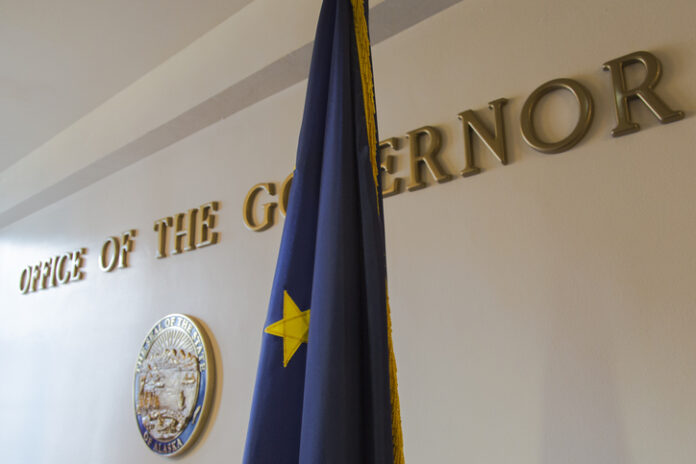Governors who locked down their state in response to the COVID-19 pandemic have wreaked havoc on their economies without reducing death or hospitalization rates compared to states that took less stringent measures, analyses of multiple datasets show.
The Laffer-ALEC Report on Economic Freedom: Grading America’s 50 Governors 2020, by Arthur B. Laffer, Donna Arduin, Stephen Moore, and Johnathan Williams, published by the American Legislative Exchange Council, scored the governors on a variety of policies — such as education, welfare, and taxes.
Among the 20 variables used, the scorecard specifically ranks the governors on their preparedness for fiscal emergencies and how they spent federal funds designed to respond to the pandemic. Some governors spent aid from the Coronavirus Aid, Relief, and Economic Security Act, or CARES Act, to respond to the pandemic, but other governors diverted the funds to other spending priorities.
Grading the Governors
Grading the 50 state governors on the policies they have implemented and the results they have obtained show clear differences, says Johnathan Williams, coauthor of their report and chief economist at ALEC.
“There is a very clear distinction between the governors that ranked well in our report and reopened their states in a safe way, in comparison to governors that locked down their economies and have refused to reopen,” Williams told Health Care News.
For example, Hawaii had the most COVID-19 restrictions and South Dakota the least, the financial website WalletHub.com reported on October 6.
South Dakota Gov. Kristi Noem (R) refused to lockdown her state’s economy, whereas Hawaii Gov. David Ige (D) imposed heavy restrictions. In ALEC’s overall ranking of governors, Noem ranked 3rd best and Inge 45th.
Hawaii had the nation’s highest unemployment rate (15.1 percent) as of September 2020, whereas South Dakota had the second-lowest unemployment (4.1 percent), the U.S. Bureau of Labor Statistics reported on October 20.
A number of governors avoided the worst effects of the pandemic on their economies, whereas others exacerbated the downturn, the ALEC report states.
“Notable governors with considerable success in protecting their economies from unemployment increases and other aspects of economic devastation include Pete Ricketts of Nebraska, Kevin Stitt of Oklahoma, Kristi Noem of South Dakota, Gary Herbert of Utah and Mark Gordon of Wyoming,” write the authors.
“In stark contrast, governors failing to protect their economies include Gavin Newsom of California, Phil Murphy of New Jersey, Andrew Cuomo of New York, Charlie Baker of Massachusetts, and Tom Wolf of Pennsylvania. These governors have seen drastic increases in unemployment within their states. This change is accompanied by an array of negative externalities correlated with lockdown policies…”
Lockdowns and Death Rates
A WalletHub.com chart of “COVID-19 Death Rate vs Restriction” shows that some states with severe lockdowns had high death rates compared to other states, and some states with few restrictions had low death rates.
Lockdowns have not affected COVID infection or death rates, says Seton Motley, president of Less Government, a non-profit organization dedicated to reducing the power of government.
“The lockdowns are one of the most dramatic overreactions in human history,” Motley told Health Care News.
Furthermore, the COVID virus is less lethal than claimed, says Motley.“The lockdowns are in response to a flu from which 99.5+% of people recover,” Motley said. “The average age of COVID death is four months less than the average age of actuarial death.”
“[Lockdowns are] nuclear bombs for a gnat,” Motley said. “We haven’t destroyed the village in order to save it. We’ve just destroyed the village.”
In addition, lockdowns have had detrimental effects on health that could outweigh the COVID toll, says Williams. “Many in the news media are ignoring the health consequences of over-the-top lockdowns and other health effects of isolation and the economic fallout of business closings and people losing their jobs,” said Williams.
The media have also ignored the leadership of President Donald Trump, says Williams.
“The president respected federalism and allowed the system to work by allowing governors to make decisions for their own states, rather than nationalizing policies,” said Williams.
Joe Barnett (joepaulbarnett@att.net) is a former managing editor of Budget & Tax News.
Internet info:
Arthur B. Laffer, Donna Arduin, Stephen Moore, and Johnathan Williams, The Laffer-ALEC Report on Economic Freedom: Grading America’s 50 Governors 2020, American Legislative Exchange Council, October 20, 2020. https://www.alec.org/publication/laffer-alec-report-on-economic-freedom-grading-americas-50-governors/
Adam McCann, “States with the Fewest Coronavirus Restrictions,” WalletHub, October 6, 2020. https://wallethub.com/edu/states-coronavirus-restrictions/73818





















